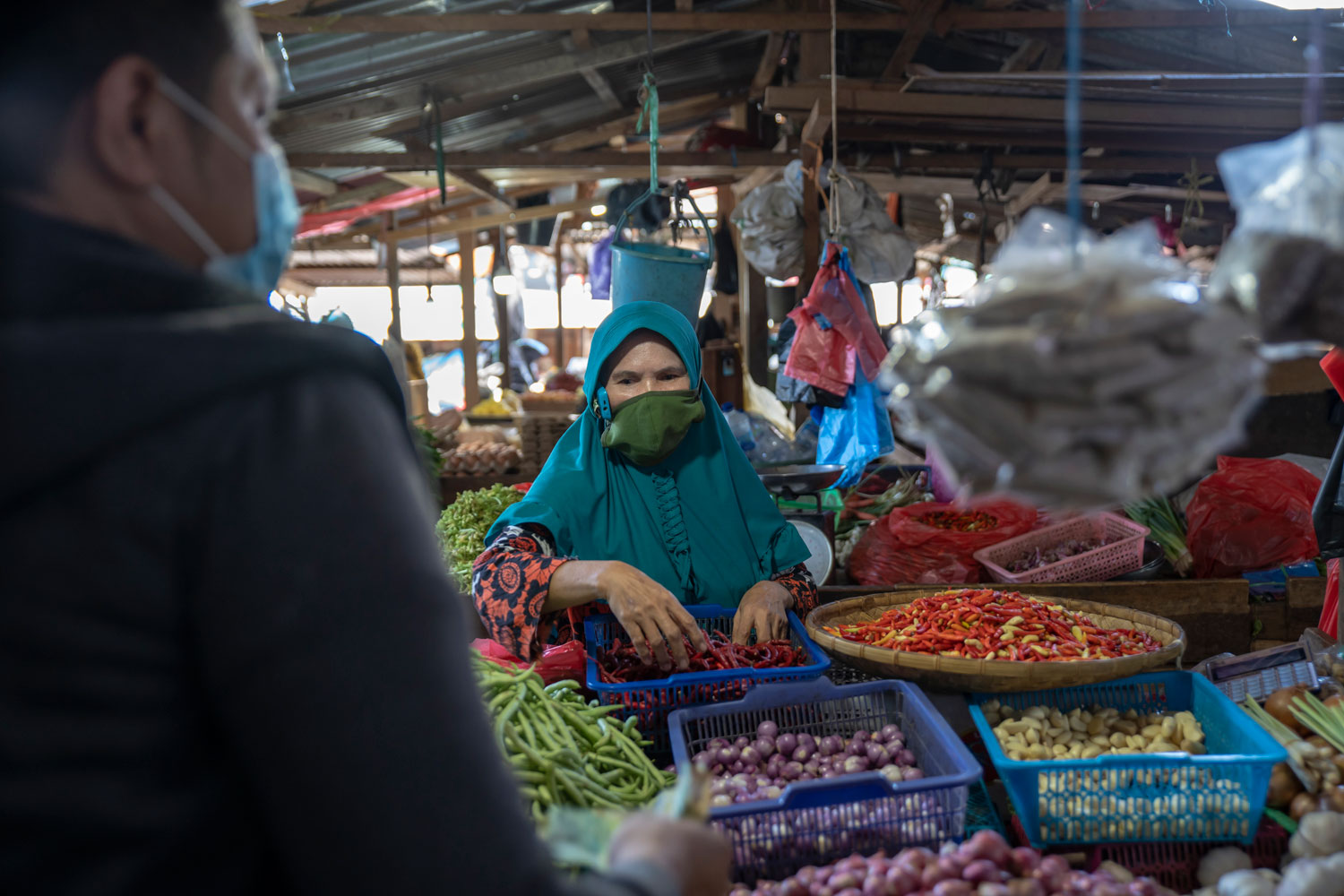The COVID-19 pandemic has created challenges and opportunities, especially in the realm of business and economics.
When first announced in March and April 2020, the pandemic had significantly eroded the income of various businesspeople in Indonesia, especially micro, small and medium enterprises (MSMEs), the backbone of the Indonesian economy.
A few months into the pandemic, however, these businesses, including the MSMEs, have swiftly buffered the shocks by rapidly adopting digital technology within just a short time frame.
Data from the United Nations Development Programme (UNDP) in 2020 revealed that prior to the pandemic, only 28 percent of the MSMEs had an online presence. Yet since the pandemic, the number has grown to 44 percent. This has helped lots of MSMEs sustain their operations and retain their staff members.
Recognizing the potent powers of digitalization to help the MSMEs survive the pandemic and the fact that it can be done in a much faster fashion than was previously thought, throughout 2020, Indonesians have seen a hyper focus among various stakeholders to support the cause.
“Yet, when we look at the digitalization of MSMEs, there weren’t many programs that targeted marginalized communities such as differently abled [diffable] individuals, the elderly and traditional sellers,” Grab Indonesia country managing director Neneng Goenadi said in a Zoom interview.
She added that these vulnerable communities were most at risk of being left behind in the digitalization rush due to their special needs and relative lack of access to resources.
A harder race for the elderly and people with disabilities?
Secretary-general of the Central Management Agency for Sahabat UMKM Faisal Hasan Basri hears many solicitudes from the MSMEs community, particularly those aged 55 years old and above. “They know they have to do something to survive, but their digital knowledge comes short. They need special assistance so that their digital skills can be improved,” he said.
Puji “Toni” Hartono, the 65-year-old owner of a rice dish stall called Nasi Bakar Cak Toni selling nasi bakar, Indonesia’s mouth-watering grilled rice in banana leaf in Cirebon, West Java seconded this. “I knew there were many digital platforms I could use to grow my business, but I didn’t know how to access, or even utilize the platform. I heard from my employees that we needed to start selling online, but I wasn’t sure how to start this digital journey,” he admitted.
The elderly community in Indonesia represents a big chunk of the Indonesian demographic. The 2018 National Socioeconomic Survey conducted by Statistics Indonesia revealed that about 24.48 million individuals out of Indonesia’s total population of about 270.6 million were the elderly. A lot of them are actually running businesses as they also need to stay active and contribute to society in their mature age.
For people with disabilities, who often face stigma as a barrier to employment, the digital economy could offer them opportunities to be entrepreneurs in their own right. According to the 2019 Intercensal Population Survey data by Statistics Indonesia, the number of diffable individuals in Indonesia had reached 8.56 percent of the total population of Indonesia, amounting to approximately 21.84 million people.
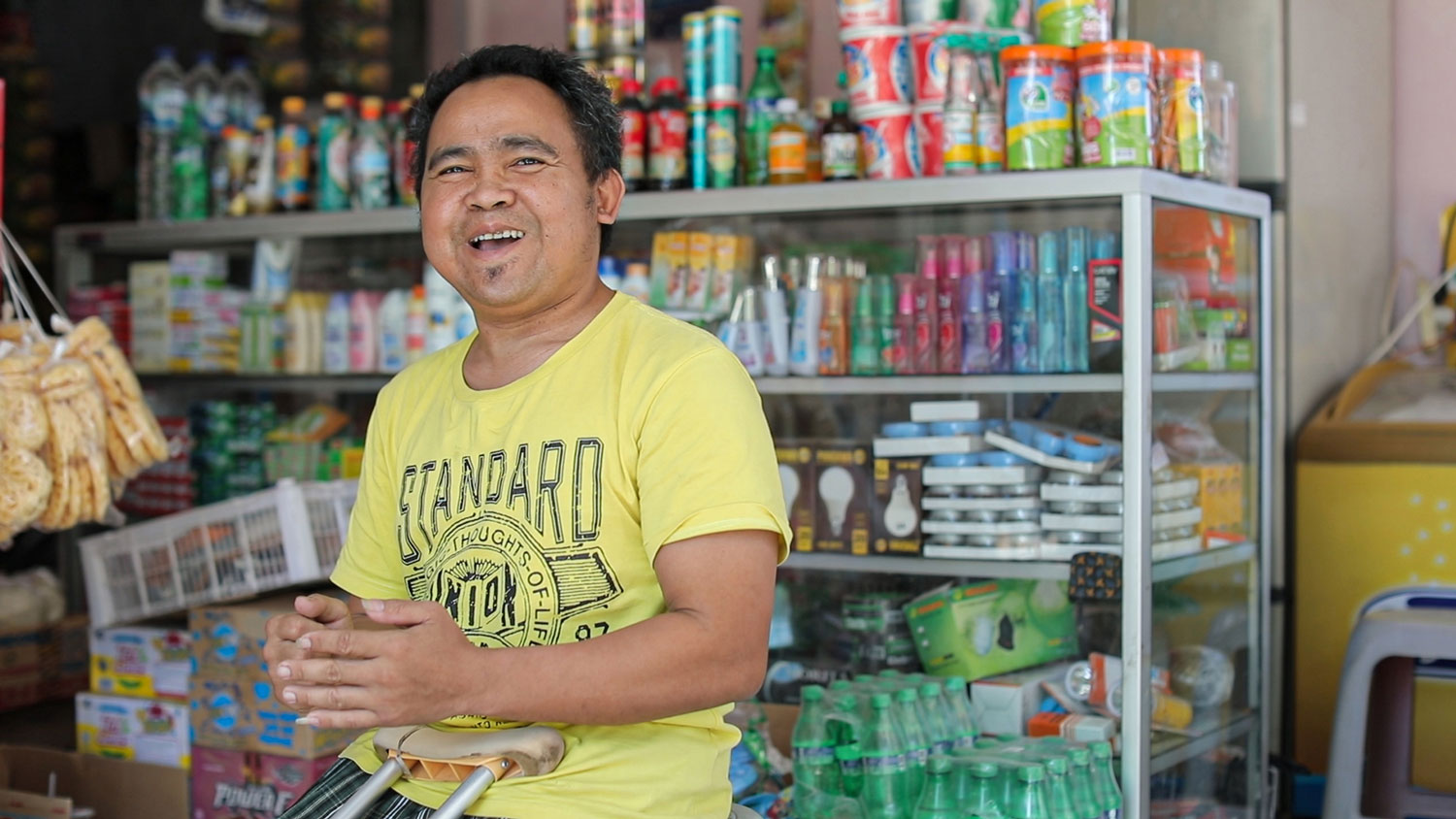
“We spoke to some of the disabled driver and agent-partners to find that a lot of people tend to look down on them. This stigma might make it harder for them to get hired, but we believe the digital economy can offer them opportunities to make a living and be independent,” Neneng said.
Cahyo Widodo, owner of a grocery shop called Vanessa Cell in Salatiga, Central Java experienced this first hand. “I have been handicapped since I was born and it was really hard for me to get a formal job since no one would think that handicapped people could do so much work. I then decided to make my own opportunity by becoming a tailor in Semarang, before deciding to go back to Salatiga and open a small warung with a touch of technology,” he tells The Jakarta Post.
Digital economy is supposed to be inclusive and everyone; despite their physical limitations, background and age, should be able to take advantage of it. “A society is only as strong as its most vulnerable members. And one of the biggest things I have learned from the pandemic is that we all have a responsibility to look out for one another. The government and private sector must work together to ensure that everyone, despite their condition, can truly enjoy the benefit of the digital economy that is currently growing,” Neneng added.
“Also, if we take a look at the fifth principle of Pancasila, the foundational philosophical theory of Indonesia, it states that ‘Social justice for the whole of the people of Indonesia’. Adhering to this principle, we believe everyone has an equal chance to get access to jobs, hence to get income, our fundamental mission. We are doing everything to make sure everybody gets a chance to get income, we have to be inclusive, to understand inclusivity is also important for a company to be high performance as well,” she continued.
She said that diversity was also very good for a business to give birth to unique innovations and solutions, true to Grab’s core expertise in digital technology.
“Can you imagine what would happen if a company was staffed by men only, for instance. What kind of ideas would such a company produce?” she asked.
“Therefore, with the spirit of gotong royong [mutual cooperation], and to realize the Pancasila principle, the benefit of digitalization must be enjoyed by everyone, regardless of physical condition, background and age,” she continued.
Bridging the digital skills gap
As a key technology player in Indonesia, Grab has embarked on extensive MSME digitalization programs, partnering with private and public sector organizations. Beyond providing MSMEs access to a digital platform through the Grab app, the company is also seeking to bridge the digital skills gap, particularly amongst the elderly, diffable and traditional seller communities, which the company believes need more help than others.
“In 2020, we focused on bringing MSMEs on to our platform so they could sustain their businesses when foot traffic to their stores dropped. At the same time we created several upskilling and incubator programs for MSMEs for them to learn skills they needed to run online businesses. Last year more than half a million new merchants joined our Grab platform. In 2021, we are focusing our efforts on supporting communities that are most at risk of being marginalized, including the deaf, elderly and traditional sellers, building on some of the work which we’ve already started since 2019”, she asserted.
To provide effective support to these groups in the training programs, Grab is partnering with other stakeholders who understand the groups’ specific profiles very well. This effort includes intensive reskilling programs, including partnering with Sahabat UMKM to conduct “Grab #TerusUsaha Akselerator” - a two-month training and incubation program that focuses on increasing the capacity of MSMEs including financial literacy, social media management, business process planning, business law, taxes and many more.
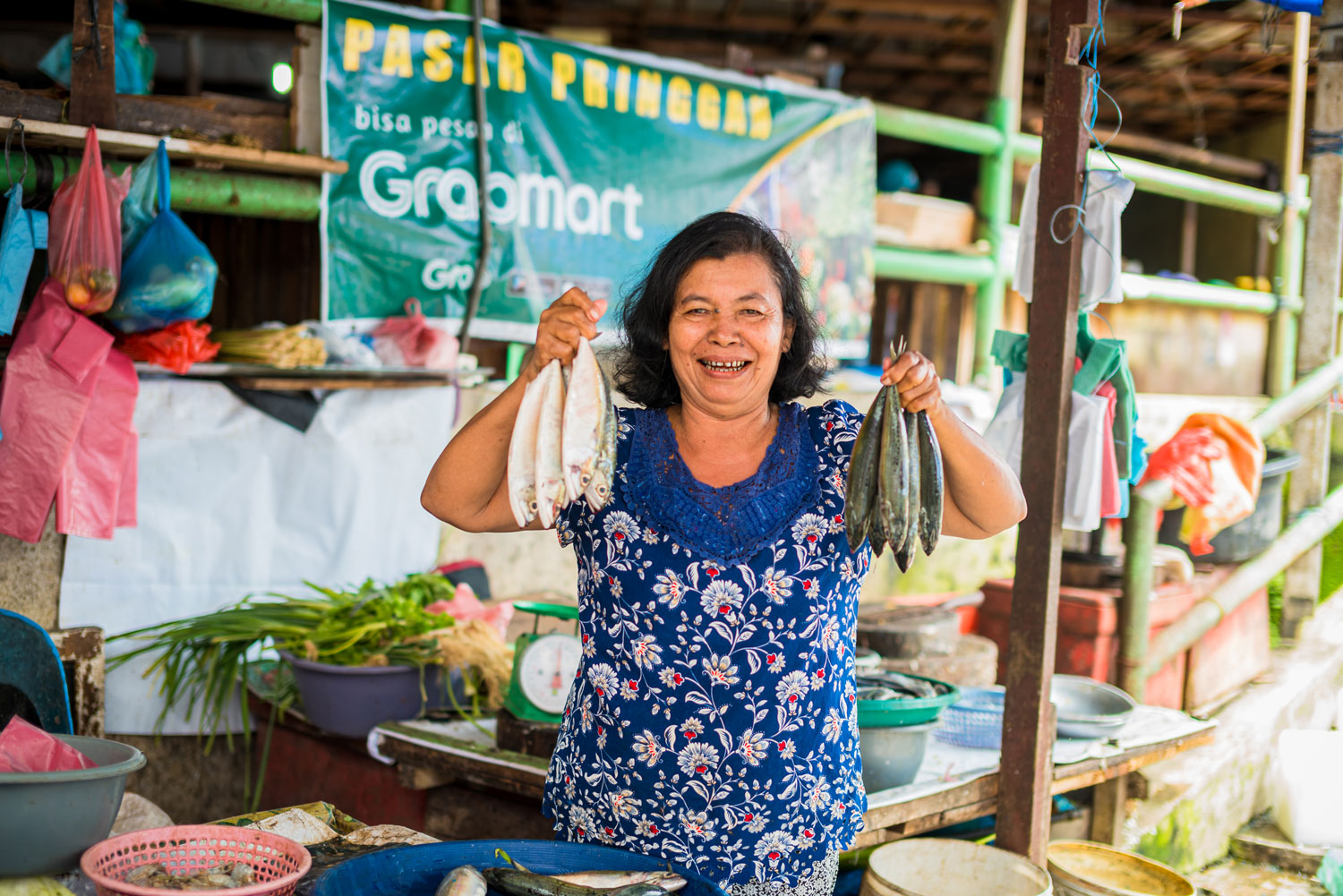
“We are delighted that a private company actually cares to invest in knowledge and skill development of MSMEs. It’s like giving bait and not just the fish, so they can strive and grow in the long run,” Faisal of Sahabat UMKM added.
Hundreds of MSMEs have been trained under this program that has been conducted in two batches since 2020. In 2021, Grab is specifically reaching out to the elderly, diffable and traditional sellers like wet markets,, extending outreach efforts that started during the peak of the pandemic.
In 2020, as PSBB restrictions were enforced, Grab onboarded thousands of sellers from wet markets onto GrabMart. The company also tailored their GrabAssistant concierge service so that consumers could use it to shop from over 7,000 wet markets across hundreds of cities.
For sellers like Rosdiana Nainggolan, a 60-year old merchant at a traditional market in Pringgan, Medan, North Sumatra, this was a lifeline. She had been selling fresh produce in the market for 30 years before the pandemic hit. “Never in my life have I ever imagined that I will be taking orders through an app. When the pandemic came, lots of my customers were texting me and asking if I can deliver the fruits, fish and vegetables to their house, but I said it's impossible as it will take a lot of time just to deliver orders. I understand that I need to adapt or see my lifelong business threatened,” she said.
Rosdiana learned about GrabMart and decided to give it a try. “I went to the Grab office in Medan and asked the team to onboard my stall on GrabMart and ask them to teach me how to take orders from GrabMerchant app. In 2 days, my stall went online. It's easy when you have the courage to learn,” she said. As a result of going online, Rosdiana even hired 2 more employees to help her with the business.
As job losses escalated as a result of the pandemic, Grab also expanded its GrabKios application to allow more individuals to sign up as GrabKios agents. Through the GrabKios app, these agents can offer financial and digital services to customers including money transfer, electricity and Health Care and Social Security Agency (BPJS) payments and many more - and earn a commission from providing those services.
Dwiki Pahlevi used to work in an office as an administration team before he got laid off, 2 months after the pandemic hit. He decided to open a phone-credit kiosk using his car, which he parks near Hamadi Market in Jayapura. “Many people in Jayapura have very limited access to banking products, hence they still require some transaction to pay electricity, BPJS insurance, and many more. Being part of GrabKios network allows me to offer more relevant services to my customers. They do not have to go far to a bank and queue for hours, which usually happen in Jayapura, just to do a transaction,” he told The Jakarta Post.
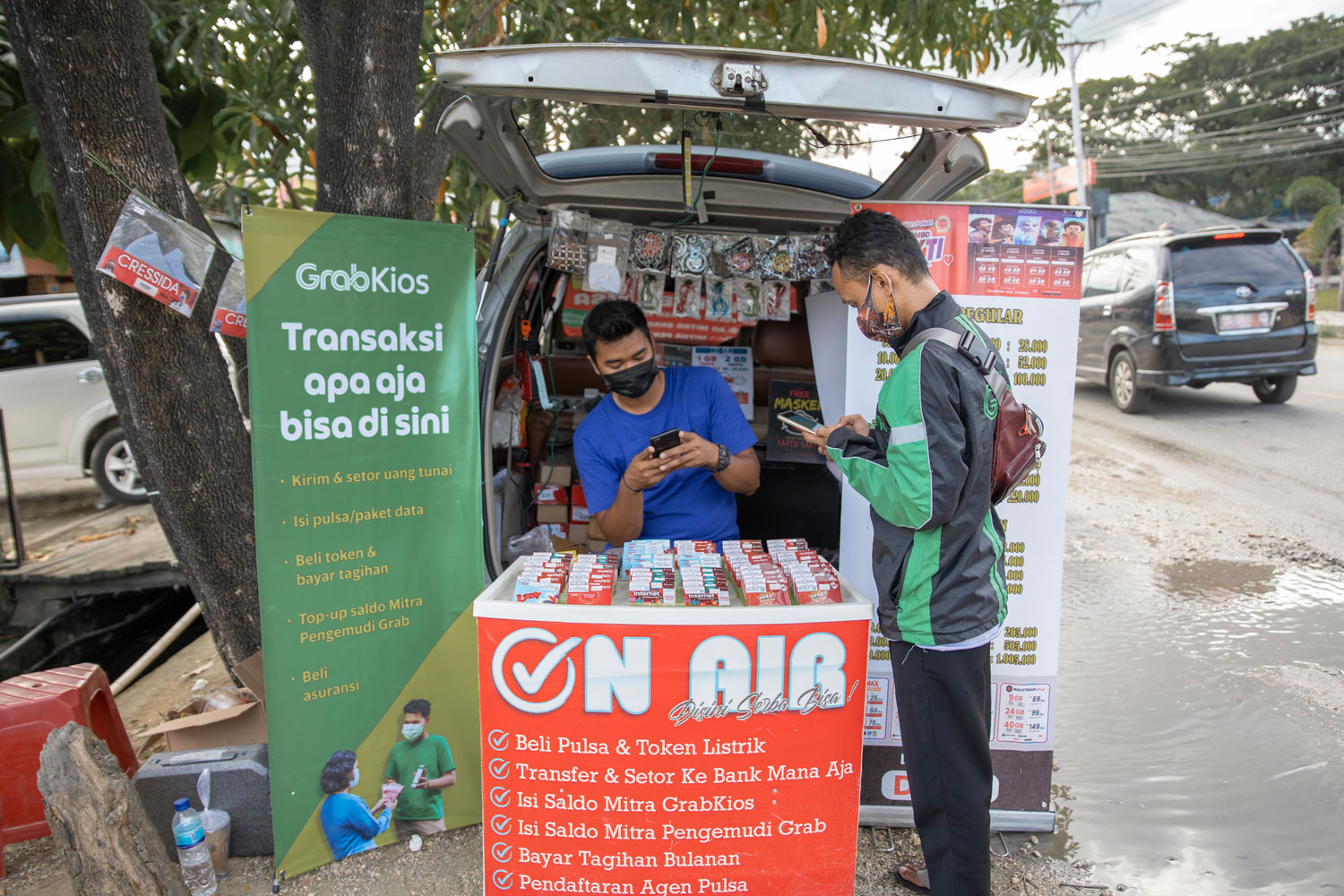
“Technology provides a fast and quick recovery for people who lost their jobs due to pandemic, while also helping small businesses like kiosks to be more competitive by enabling them to offer more products and services to customers. That’s the positive domino effect of it,” Neneng added. “User response to these new features has been pretty good, amazing. People love that we keep innovating.”
Helping the vulnerable: Toni, Cahyo and so many others
So what happened to Toni, the 65-year old owner of Nasi Bakar Cak Toni? He told the Post that his effort in learning about technology from his employees is paying off. “I asked my employees, who are mostly millennials, to teach me how to use the online platform. I believe that we should not be embarrassed to learn from someone younger, because we know that we need that knowledge. In less than three days, my warung was registered on GrabFood and I learned how to operate the app. In the end, it wasn’t as hard as I thought it would be, “ he added.
In fact, Toni is now making use of features like the marketing tools in the GrabMerchant app to promote his warung to more people across Cirebon.
“It is very interesting that we can advertise our kiosk’s banner on the app’s shuffle cards and get new customers from it,” he explained. Thanks to the increased popularity of the kiosk, Toni has now opened three small branches of his Nasi Bakar Cak Toni brand.
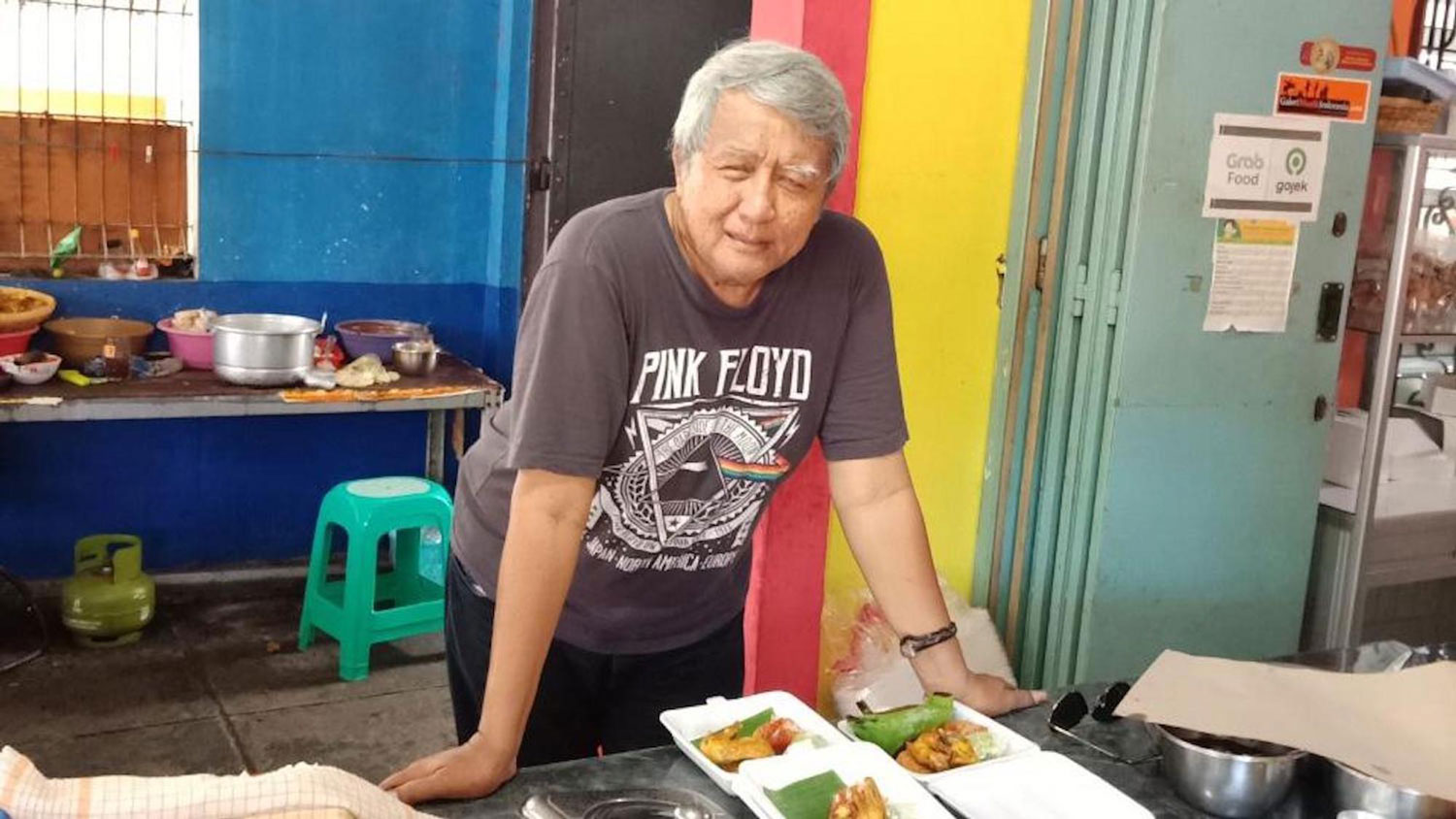
When asked what his ambition was, he told us that his employees are his motivation to run business and go digital. “I don’t want to fire my employees; I want to still be able to help them earn an income even during the pandemic. Technology really helps me to save costs on delivery and vehicle investment because Grab’s system already has it all.”
For Cahyo, technology provides him with a second chance to bounce back. “In 2017, I started to notice that my income from the warung that I have established in 2001 was becoming less and less. Turns out the competition is getting tough with many franchised minimarkets starting to enter Salatiga.”
Cahyo started to talk to his customers and learnt that people around his neighborhood are still unbanked. He then learnt about GrabKios technology that could help to solve this problem and he decided to become a GrabKios agent since then.
“My warung can now also serve digital transactions such as money transfers, purchasing electricity tokens, and BPJS payments. Many customers have started to return to my warung since then,” he shared.
Cahyo and Toni are living proof that physical limitations and age are not an obstacle to reinvent themselves and pursue their ambitions.
Rethinking processes to build an inclusive ecosystem
Grab believes that to help these specific communities, companies must be willing to dedicate resources to tailor their processes and services to best serve their needs.
Since 2019, Grab has worked to improve the onboarding processes and ride experience for the growing number of deaf driver-partners on its platform.
“We’ve been working with the Indonesian Association of Disabled Person (PPDI), Indonesian Association for the Welfare of the Deaf [Gerkatin], the Communications and Information Ministry and the Indonesian Inclusive Connection Community (Konekin) to develop training materials catered to our deaf partners,” Neneng said.
These include adding subtitles to onboarding or application video materials to aid deaf driver partners during the training process, as well as training Grab employees on sign language. Neneng said that Grab has learned a great deal from its partnerships with these organizations, especially regarding the special needs that deaf drivers might have while doing their work.
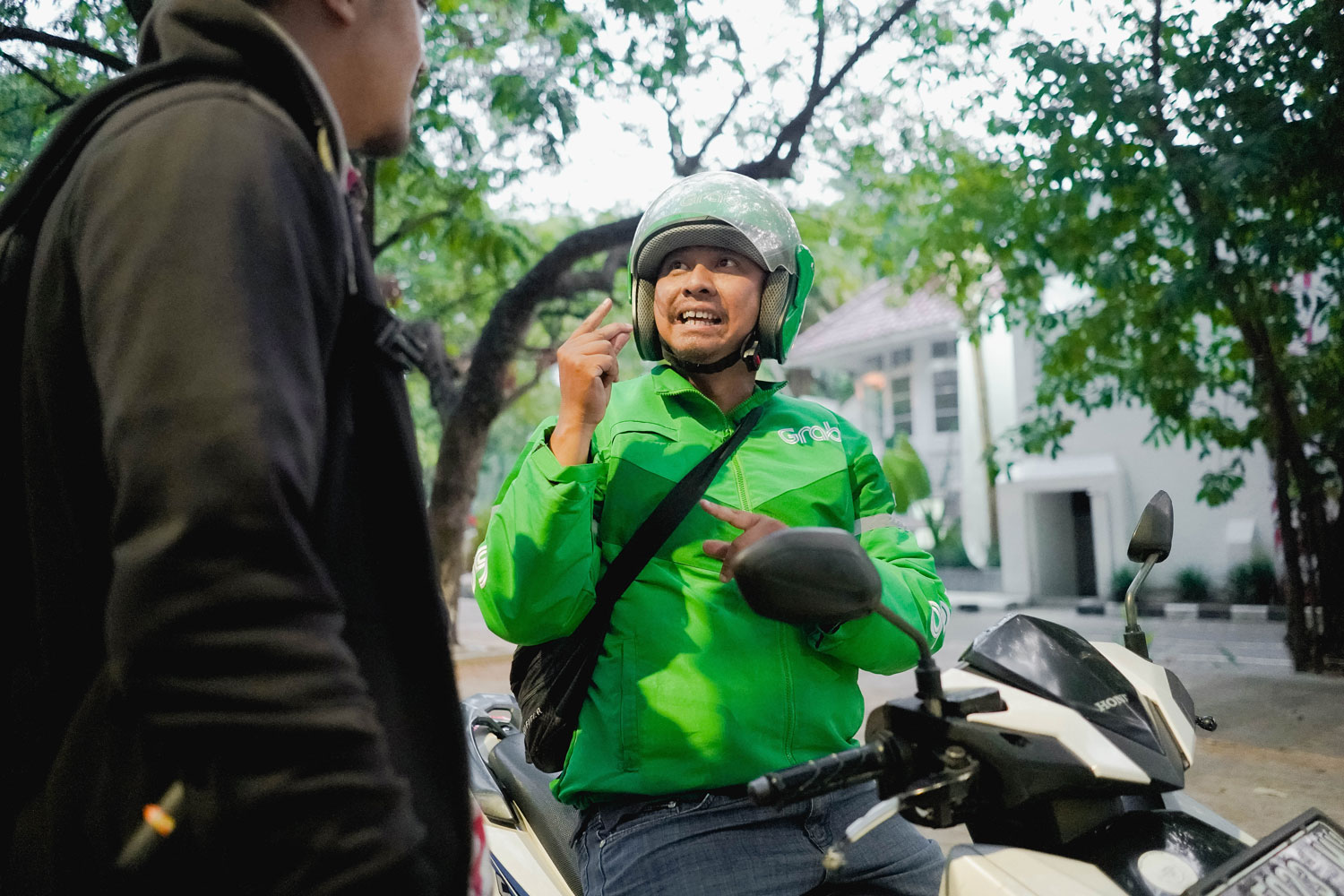
“For instance, we’ve put signs in their cars to indicate to passengers that the driver is deaf. That way we can help avoid misunderstandings between them,” Neneng said.
Bonar Bangun Simanjuntak, a 31-year-old Grab driver partner from Bandung, West Java, is part of a community of deaf driver partners, which has 30 members in its Bandung chapter. He appreciates that Grab has features in its app to inform passengers that their drivers are deaf, and provides tips for how to communicate with - such as using the text function instead of making audio calls, or using nonverbal gestures during the ride.
“Furthermore, when I was applying to be a Grab driver partner, I was also required to learn bike and car safe driving techniques for deaf people,” Bonar told the Post in a WhatsApp message.
“I’d also let my passengers know through the chat box that they could just tap my shoulder to communicate with me, instead of speaking. For instance, to turn right, they could tap my right shoulder and to turn left, they could tap my left shoulder, approximately 20 meters because we would make a turn. To stop, they could tap both shoulders,” he continued.
Of course, Bonar’s ride with the Grab passengers has not always gone smoothly because some people are still not familiar with the different ways of communicating required with diffable drivers.
“Not all the passengers are looking at their chat messages. During one ride, a passenger actually hit my shoulder hard on the way. He said he was angry because I didn’t listen to him. I told him that I was actually a deaf person. He apologized right away,” Bonar said.
“Yet I’m always patient when dealing with these people. I understand that not a lot of people have been familiar on how to interact with diffable individuals,” he continued.
An upbeat attitude toward 2021: inclusivity and equality
Looking ahead, Neneng believes that MSMEs have reason to be optimistic and positive about 2021, despite the pandemic.
“If you only think of the pandemic from the half-empty angle, it’s susah [difficult], gak ada masa depan [no hope for the future] -- so dark, right? But if you look at it from the half-full angle, basically, the pandemic is an opportunity, because in this digital era, nothing is impossible anymore. With technology, we can solve so many problems. But, you need to understand how to take advantage of it and it is our job to ensure that there is no one left behind,” she said.
“Our tagline is #TerusUsaha [keep on working], you have the word susah in the middle right, but it’s up to you whether to look from the half empty or half full,” she continued.
“In 2021, we would like to become the government’s strategic partner to support our country’s economic recovery. We believe digitalization and reskilling will be critical to this effort, and we believe in the spirit of gotong royong, we can ensure that everyone, regardless of their background or circumstance, can truly benefit from the digital economy,” Neneng said, concluding the interview on a high note.


